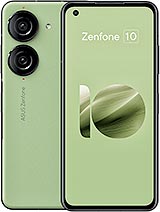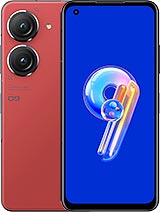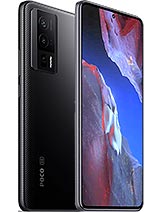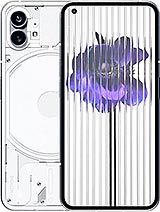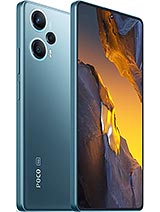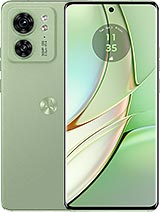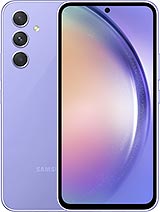Nothing Phone (2) review

Android 13 with Nothing OS 2.0
The Nothing Phone (2) runs on the Nothing OS 2.0, an ever so slightly modified version of 'stock' Android 13. Nothing promises 3 years of Android updates and 4 years of security patches every 2 months.

Using the Phone (2) does feel a lot like using a Google Pixel. Most of the user interface is familiar, with things like the launcher, the Settings app, and most of the pre-installed apps being identical to what you'd find on Google's smartphones.
Nothing OS 2.0 includes a number of custom widgets - clocks, weather, quick settings, calendar, Nothing X widget. They match the overall UI look and are a great addition to the launcher for sure.
The launcher also supports large folders and large single icons, if that is your thing.




Large folder • Large folder • Large app • Large app
Oh, and there are quick shortcuts on most of the system apps - you can access them with a tap and hold on the app icon.
Other than that, the changes Nothing has made are quite selective and judicious in nature. While the phone mostly uses Roboto for the interface, there is also sparing use of the company's distinctive dot matrix typeface for certain UI elements, such as for the headings inside the Settings app, the lockscreen, the charging UI, and the custom homescreen and lockscreen widgets.




Fingerprints • Face unlock • Lockscreen widgets • Lockscreen widgets
Always-on Display is available, and it works the Apple way, the latest one at least - it dims the wallpaper and leaves the monochrome clock and the lockscreen widgets visible.

Within the experimental features section, there is also a Connect to Tesla option, which is supposed to let you control some features of your Tesla vehicle directly from the phone without requiring the Tesla app.
Also, in Experimental, you will find AirPods support expanded information for the battery settings. There is also Enhanced Touch Response, which should improve the touch response speed in some games. And Glyph progress feature, where you can track the progress of your Uber at the back of your phone.





Notifications • Quick settings • Experimental features
Nothing OS has also introduced a new Monochrome UI option for those wanting an even more exclusive, unique experience. It is part of the Do Not Disturb and Bedtime routines, but you can set it up for you however you prefer.

The monochrome UI is a display option, and it doesn't affect exactly the UI - so if you take a screenshot or a picture, it would still be colorful.
There is also a game mode, but it's less elaborate than on other phones. You have to add games for this mode to kick in manually, and when it does, it can just enable Do Not Disturb mode and enable mistouch prevention around the edges of the screen. If you have a Nothing Ear paired, it will also enable low latency mode on them.
There are two new features for the Game Mode as part of Nothing OS 2.0 - Game Color Plus (enhanced color rendition) and Game Dashboard.
The Nothing X app should be available - it will handle the Nothing headphones. It supports Ear (1), Ear (Stick) and Ear (2).
The most custom aspect of the Nothing OS is the inclusion of the Glyph Interface, which controls the LEDs on the back of the phone. First, the feature is optional, so you can just turn it off or schedule it if it bothers you. You can also adjust the brightness of the LEDs, which can get seriously bright, even at the default medium brightness.





Glyph • Settings • Flip to Glyph • Ringtones and messages
At present, the Glyph Interface can be used primarily for notifications and alerts. The Glyph Menu contains Brightness, Ringtones, Notifications, Flip to Glyph, Glyph Timer, Composer shortcut for custom Glyph ringtones, and Visual Feedback for Volume control, Charging meter, Google Assistance and Third Party apps (Uber for now).
The Phone (2) comes with ten custom ringtones for calls and ten notification sounds. Each of these has a pre-programmed pattern assigned to them that plays out on the LEDs whenever they are playing.

You can add your own ringtones to the phone, and it will try to map them to the different lights. You can also compose a ringtone via the integrated Composer, which is quite neat - you can choose the type of tune and push a few buttons like a DJ.
For calls, you can assign a ringtone to each of your contacts. This way, not only do you get audible confirmation of who's calling, but if the phone is placed face down, then the unique light pattern on the back can also inform you of the caller id. Of course, there are only ten custom ringtones, so there's only so many unique callers you can assign them to, but any more would likely be too much to remember.
This can also be done for app notifications, provided the app allows setting a custom notification. Some messaging apps will also allow setting a custom ringtone for each contact, but again you are limited to just ten + custom.

Other things you can do with the lights at present is have the LED bars light up incrementally with the phone's charging status. The lights can also be made to flash when you say the Google Assistant hotword. And it's quite neat to see the volume level when adjusting the control with the screen facing down.






Charging Meter • Glyph Timer • Google Assistant • Volume Indicator • Glyph progress • Battery Share
The Glyph Lights work really well when Battery Share is active - that's the reverse wireless charging option.
Glyph progress is also available, but as we said, it works only with Uber for now. More apps are expected to adopt it soon after launch.
The Glyph LEDs can also be activated to act as a fill light when shooting videos or taking portraits.
Finally, the feature Flip to Glyph is really cool - it's like an expanded silencer. See, once you flip the phone, the Glyph interface will be active (and you will get a glyph prompt for that), while sounds will be silenced.
As far as bloatware is concerned, the Phone (2) really has none to speak of, assuming you don't count the ever-increasing mandatory Google apps as bloatware. The only custom apps on the phone are the Camera app, the Composer app, the Weather app and a Recorder app.
The Recorder and Weather apps have the same dot matrix UI and look pretty cool aside from offering useful functionality.
The Nothing X app may or may not come pre-installed, but it's available for download in the Play Store.
In terms of stability, the Nothing Phone (2) was surprisingly well-behaved. And the whole UI is incredibly fast and fluid, a real treat on that fast Fluid AMOLED. Sticking to near-stock Android ensures a clean and consistent visual experience. The company's own design choices are measured and tasteful.
Performance and benchmarks
The Nothing Phone (2) brings the one thing many Phone (1) fans wished for last year - a flagship chipset. It's the Snapdragon 8+ Gen 1, a huge upgrade over the Snapdragon 778G in Phone (1) and the second-best SoC on the market today.
The Snapdragon 8 + Gen 1 on the Nothing Phone (2) is a toned-down version of the original chipset with lower clock speeds on all three core clusters. The main Cortex-X2 core is clocked at 3.0 GHz (instead of 3.2 GHz), the 3x Cortex-A710 cluster runs at 2.5 GHz (instead of 2.75 GHz), and the energy-efficient 4x Cortex-A510 cores are ticking at 1.8 GHz (instead of 2.0 GHz). This should bring down the overall energy demand.
The chipset is still based on TSMC's 4nm manufacturing node and relies on the Adreno 730 GPU for graphically intensive tasks.
The Nothing Phone (2) is available in three memory configurations (UFS 3.1 + LPDDR5X) - 8GB RAM + 128GB storage, 12GB RAM + 256GB storage (ours), and 12GB RAM + 512GB storage.

Let's see some test results now.
The Nothing Phone (2) CPU scores are on par with other SD8+ Gen 1-featuring smartphones and, quite expectedly, below the Zenfone 10 and its SD 8 Gen 2 chip.
The offscreen GPU scores show that Nothing Phone (2) is well-equipped to offer flagship-grade gaming experience on the go.
Unfortunately, the Nothing Phone (2) does not support High Frame Rate gaming, at least not at launch. Maybe it's a BBK thing, but then we should believe that BBK has Nothing to do with Nothing. Right? Right.
Finally, the AnTuTu scores are great, but not chart-topping. We guess the 60fps cap may have something to do with lower-than-expected numbers.
And before we wrap this section, let's run some stress tests. The CPU Throttle returned 70% stability, which for a flagship chipset with a passive cooling solution is up to par and not bad at all.
The GPU Stress Test gave us 55%, which is in line with most flagship chipsets that rely on passive cooling systems.
The Nothing Phone (2) gets noticeably warm when running at peak performance, but it never got hot. We think the thermals and heat dissipation are done very well here, and we have no complaints.
As far as performance is concerned - the Nothing Phone (2) has the hardware to give you excellence. For some reason, high frame rate gaming is a no-go at launch. Meanwhile, we'd consider the stability is good and the phone reliable, as we saw no issues when running a game for more than 60 minutes.
And one more thing, the Nothing Phone (2) feels incredibly smooth and fast no matter the app or game at hand, the UI is incredibly fluid. Having reviewed a ton of phones, we can safely say the Phone (2) feels like one of the fastest to date.
Reader comments
- Anonymous
- 28 Sep 2024
- nwR
Used the Nothing Phone (2) for two weeks now; it's AMAZING. I have no issues with it, no lag in day-to-day usage, haven't experienced any glitches in the OS, Nothing customer service is great as well (at least in warranty inquiries). Defini...
- Anonymous
- 28 Sep 2024
- nwR
Source: trust me






















